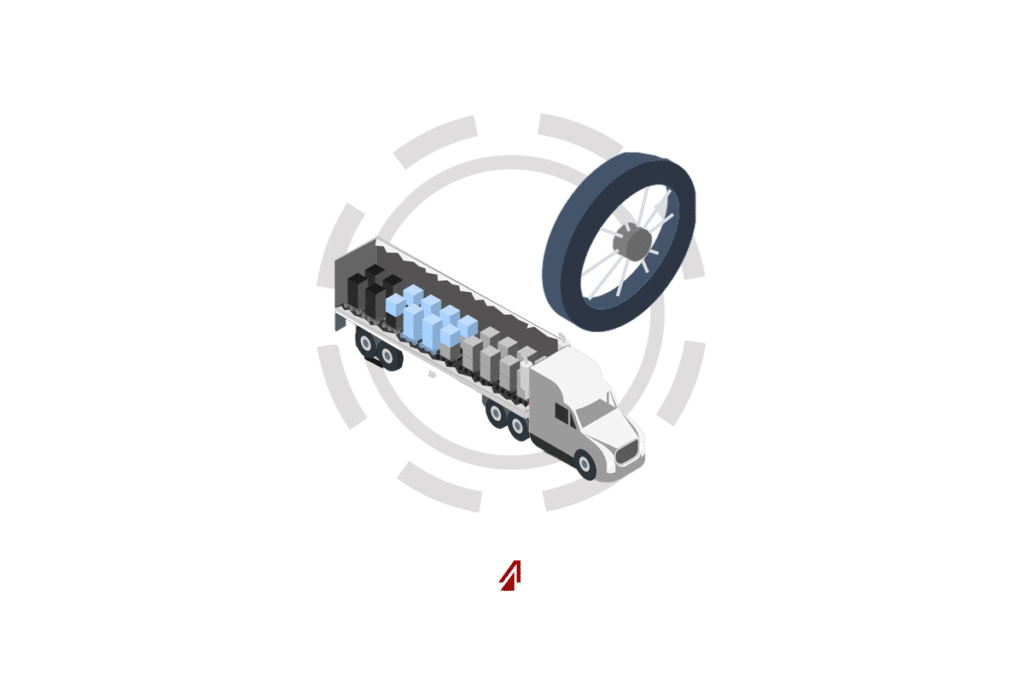Q1 is one of the most popular times for businesses to re-evaluate their processes. Many industries, like logistics, are past the busy holiday season and are ready to launch into the fast-paced spring rush. That is when many companies can optimize their shipping strategy by auditing their less-than-truckload (LTL) service. Traditionally, companies have used shipping services with the Hub-and-spoke method to move their LTL freight. But, now is the time to see if switching to consolidated shipping is right for you.
What is Hub-and-Spoke?
Hub-and-Spoke is how many LTL service providers deliver freight. Several shippers (Spokes) will send their freight to a centralized depot (Hub) and send their freight towards its final destination. Freight with similar destinations are batched on the same truck and are sent to another, larger depot, where the freight is transferred again. This progresses the same until the freight is delivered to its destination.
This method is effective, but it has downfalls as well.

Advantages
Typical Hub-and-Spoke shipments are smaller, denser loads that are more robust and less valuable. They also tend to have ship fewer shipments with less firm delivery schedules. This is effective for several reasons.
• Freight can often be picked up more quickly from the shipper.
• Shipments can be cheaper.
• Shipments can be efficient over short distances.
• More regular deliveries.
Disadvantages
Companies should evaluate whether Hub-and-Spoke is effective for their LTL needs, however, because these shipments carry several disadvantages. For instance:
• Shipments usually have longer delivery times.
• Shipments have more freight touches.
• Freight is more susceptible to damages.
• It is not effective for larger quantities.
• It is not effective for more shipments.
How is Consolidated Different?
Consolidated LTL shipping is similar to Hub-and-Spoke but with notable differences. Loads are made up of multiple shipments from multiple shippers that consolidate at a centralized hub, BUT once consolidated in the hub, the freight remains in the same truck until it is delivered. This greatly reduces the number of freight touches and helps prevent damages.
There are several advantages and disadvantages to this method as well.

Advantages
Consolidated shipping works most effectively with larger, more consistent loads. Often, these loads are made from 5-20 pallets (8-40 ft of trailer space) and are better suited for highly valuable or fragile freight. Other advantages include:
• Shipments have a quicker, more sensitive delivery schedule.
• Freight is touched less.
• Shipments are simpler in regards to freight class.
• Simpler pricing structure for shipments – shippers only pay for the space they use!
• Less expensive for larger, denser shipments.
Disadvantages
One disadvantages for consolidated LTL shipping is the necessity to plan shipments ahead. Since these loads are generally larger, it is necessary to give the LTL service time to plan the correct number of trailers to accommodate your load.
Both of these methods are effective for moving LTL shipments; but at ProTrans, we prefer the speed, security, and savings consolidated shipping offers.

We have a sophisticated network of carriers and facilities to move your LTL shipments quickly and safely – meaning savings to you. As for planning, we can help with that! ProTrans has an expert team of logistics managers to help you schedule shipments follow them through to delivery, and follow up with you after. So, if your company generally ships larger and longer LTL shipments, are looking for savings in damages or claims, want better speed and fewer touch points, then consider ProTrans consolidated shipping for your LTL freight service.
Let’s analyze your LTL shipments and logistics needs as a whole GET STARTED



